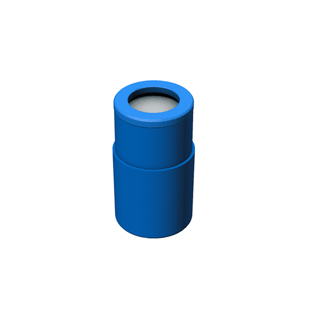Reference papers
Publications on Catalyst performance
Testimonials
VRLA Battery life extension saves millions for U.S Air Force
The document serves as a testimonial to the cost saving found when using catalysts within the telecommunications division of the U.S Air Force. Click here to read the full testimonial.
Selected Technical Presentations and Papers
Lead Purity: The Mother of All VRLA Problems - 2010 Battcon paper
The paper discusses the fundamental problem in VRLA batteries of using impure/recycled lead. Catalysts can solve this problem by accommodating the excess internal gassing caused by the impure lead.
Monobloc Batteries, High Temperatures & Catalysts - 2006 Battcon paper
Outside plant and other high ambient temperature applications are dramatically reducing the life of 12V monobloc batteries. The use of an internal catalyst is discussed to increase the life and help mitigate the detrimental effects of this temperature.
A Case Study: Four Years of Test data - Infobatt 2004 paper
This presentation offers the results of rehydration and catalyst addition to a 48 volt, VRLA battery string. Data was accumulated over 4 years with a verification of performance during the August 2003 blackout. Click here for presentation.
Advances in the Design and Application of Catalysts
This paper discusses advanced in the design of the internal catalyst for batteries. One area of focus is the development and design of a catalyst that can accommodate hydrogen sulfide. This gas is normally found within the lead-acid system, and can be a poison to catalysts. Click here for presentation.
CATALYST 201: Catalysts and Poisons from the Battery
This paper presents the early discovery of hydrogen sulfide within the lead-acid battery. Long term tests to confirm this discovery as well as a preliminary design to prevent this gas from poisoning the catalyst are presented.
CATALYST 101: The Basics of Using Catalysts in VRLA Cells
This paper summaries five (5) years of focused work on catalyst function and operation within a battery system. Polarizations of the electrodes are discussed and the demonstrated improvements from internal catalysts.
Hydrogen Sulfide in VRLA Cells
This paper presents the initial work regarding hydrogen sulfide generation within the lead-acid battery system. The creation and absorption of this gas within the battery is discussed in the context of a 'hydrogen sulfide cycle'.
Quantifying Secondary Reactions in VRLA Batteries
This paper discusses the impurities found in lead-acid battery materials, and how these impurities can affect negative plate discharge, and discusses cell balancing necessary for long-life, VRLA battery design.
Balanced Float Charging of VRLA Batteries by Means of Catalysts
This paper discusses the internal oxygen cycle within the lead-acid battery system and the relationship between electrode polarization, recombination efficiency and the role of the catalyst in this scenario.
Can VRLA Batteries Last 20 years?
This paper provides experimental data on the discharging of the negative plate during steady-state float charging, per manufacturer's recommendations. The positive effects of an internal catalyst are presented in terms of extending the life of VRLA batteries.
Correcting Inherent Imbalance and Consequent Failure of VRLA
Experimental data is presented to reveal how chemical imbalance within the VRLA battery system can shorted life through negative plate discharge and water loss.
Gas Evolution, Dryout, and Lifetime of VRLA Batteries - An Attemin' to Clarify Fifteen Years of Confusion and Misunderstanding
This paper presents a summary of experimental data and studies that confirm the vulnerability of VRLA batteries to shortened lifetimes through unplanned water loss.
Behavior of VRLA Cells on Long Term Float: Part 2
Experimental laboratory data is presented that compared the operation of VRLA batteries both with and without an internal catalyst. A confirmation of the benefits of catalysts is presented.
Float Behavior of VRLA Cells: Theory vs Reality
Experimental data on 20 year design life VRLA batteries is presented with a focus on the water consumption during normal operation. A discussion of the internal chemical operation is presented.



